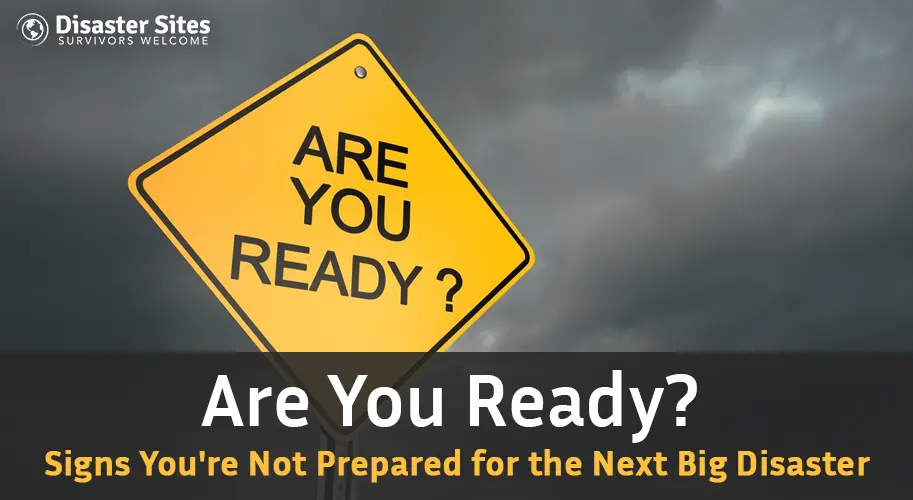We use cookies to personalise site content, social media features and to analyse our traffic. We also share information about your use of this site with our advertising and social media partners.
FEATURED
SPONSORED
VERIFIED

Sep 30 -
8 minutes, 53 seconds
-442 Views 0 Comments 0 Likes 0 Reviews

One thing we have learned in recent years is that the world can change in an instant, and become full of disasters such as earthquakes that have devastated towns and cities, cities that have been flooded with little or no warning, and wildfires that destroyed thousands of homes in a matter of hours. Disasters do happen, and when they do, preparation can mean the difference between surviving and being involved in a personal tragedy.
Being not ready is not only afraid of your life, but also your property, financial security, and mental well being. When panic kicks in, your ability to think clearly, make proper choices, and act quickly goes. Sadly, many people find themselves weak, only to realize too late they had no plans in place.
This blog will reveal the indicators that suggest you are not as ready for the next big disaster as you'd like to believe. If any of these indicators sound like you, now is the time to act before it's too late.
When disaster strikes, the chaos that follows is often only avoidable if you know exactly what to do. An emergency plan is your map during uncertain moments, however many families and workplaces do not have one at all. You can waste precious time without an emergency plan when you are arguing about which way to go, what to bring and how to find each other.
Here is an example. A flood warning for your area goes off at mid-night. Do you know your quickest evacuation route? Where will your family meet if you become separated? Out of your local area, which shelter is the safest for your location? If you are unable to answer any of these questions with confidence, you are in real danger of moments when you have to make decisions - often in split seconds and under stressful conditions.
You should have:
Preparedness is not just about tools — staying updated with evolving threats like Climate-Driven Wildfires Account for Thousands of American Deaths: New Research Unveils Shocking Toll can help you adapt your plan year-round.
When a disaster strikes, you may not have the opportunity to run to the store. Streets may be closed, stores may be closed, and electrical and water services could be out. If we are to emphasize, a fully prepared emergency kit is your life-saving lifeline, and people either do not own one or mention getting it later.
A fully equipped emergency kit should enable one to survive alone for at least 72 hours, which means it should contain the basics including:
The Number 1 mistake I see? Ignoring your kit for years on end. Batteries can die, food can spoil, and medicines can lose their active ingredients. It is advised that one should consider reviewing their kit every six months for the sake of discarding any food or medicine that has expired or inedible and change it over for the season.
Of the unprepared situations that could exist, the biggest is not not having a kit or a plan, it's believing that disasters primarily happen to "other peoples" in "other places." This belief is dangerous because it creates a false sense of security and it allows us to delay vital actions until well past the time to act.
History proves that anywhere is a safe area. Earthquakes have occurred in areas with no modern record of seismic activity; flash floods have inundated whole communities that statistically have always been too dry for such an event; and even very small towns far from the beach have been affected by tornadoes, wildfires, and toxic spills.
The important reality is, disasters don't check your postal code before striking. Believing you won't be affected leads you to skip drills, no emergency stockpile, and in general prepare poorly. The more you dismiss the risk the bigger impact you face when you do get affected.
Regular practice is one of the most overlooked steps, yet research highlighted in Top 5 Myths About Natural Disasters - Debunked shows why it’s vital to act out your plan before you need it.
Knowing what to do in theory is very different from doing it in practice. Without doing regular practice, your well thought out plan falls apart under stress, when people get scared and adrenaline kicks in they often freeze or forget steps that they might otherwise do unless they have practiced beforehand.
It is like a fire alarm at a school. The students and teachers don't just read the evacuation route, they walk it many times, so it becomes second nature. The same is true for your home or office.
Drills to consider:
Practicing will also allow you to find weaknesses in your plan; maybe a door doesn't open quick enough, maybe the place you are meeting isn't safe anymore, maybe it turns out that your phone alert system doesn't have service. The more you practice the less panic you will feel when every second counts!
A good communication plan includes a pre determined emergency contact outside of your area, emergency backup devices like battery powered or hand crank radios, and fully charged power banks. It is also wise to agree on simple check in times and alternative gathering locations ahead of time. While sometimes technology fails us, and we cannot access the traditional means we depend on every day, all steps to share updates and coordinate actions have not.

“To assist disaster survivors by providing a source for them to come together in time of need, to aid in the listing of events, information and other forms of assistance, and continuing support through the recovery process.”
Share this page with your family and friends.